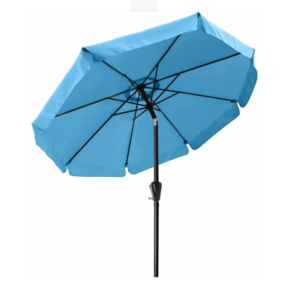
Imagine setting up a cozy nook in your garden under the shade of a beautiful patio umbrella, only for a gust of wind to send it tumbling. The choice between sand and gravel for your umbrella base is more than a matter of preference—it’s about ensuring peace and stability in your outdoor haven.
The Importance of a Sturdy Base
A patio umbrella without a sturdy base is akin to a house without foundations. The base not only supports the structure but also anchors it against the whims of nature. Today, we delve into the merits and considerations of using sand or gravel in your umbrella base, drawing from personal experiences and shared stories from the community.
Weight and Stability
Maintenance and Longevity
Both sand and gravel are generally inexpensive, though costs can vary by region.
Wind Resistance
Aesthetic and Design
Drainage

When choosing between sand and gravel, consider not just the environmental factors but also your lifestyle and the frequency with which you’ll be moving or adjusting your umbrella.
For Windy Conditions:
For Frequent Movement:
Here’s how you could structure the information in a table format:
| Criteria | Sand | Gravel |
|---|---|---|
| Aesthetic Preferences | Smooth texture that blends into most decor | Coarse texture and visible stones suit rustic or natural settings |
| Drainage Needs | Retains moisture, not ideal for quick drying | Superior drainage, best for rainy areas |
This table concisely compares sand and gravel based on aesthetic preferences and drainage needs, providing a clear and quick reference for decision-making.
Conclusion: Crafting a Durable Base
Selecting the ideal filler for your umbrella base is key to forging an outdoor retreat that’s both stable and welcoming. If your heart is set on the hefty, wind-defying benefits of sand, or if you’re drawn to gravel for its straightforward drainage and ease of use, your decision forms the bedrock for endless serene afternoons and vibrant get-togethers in your outdoor sanctuary.
Keep in mind, the optimal base isn’t just about structural support—it’s about complementing your way of life and design tastes. Cheers to discovering the ultimate foundation that transforms your outdoor space into a haven!